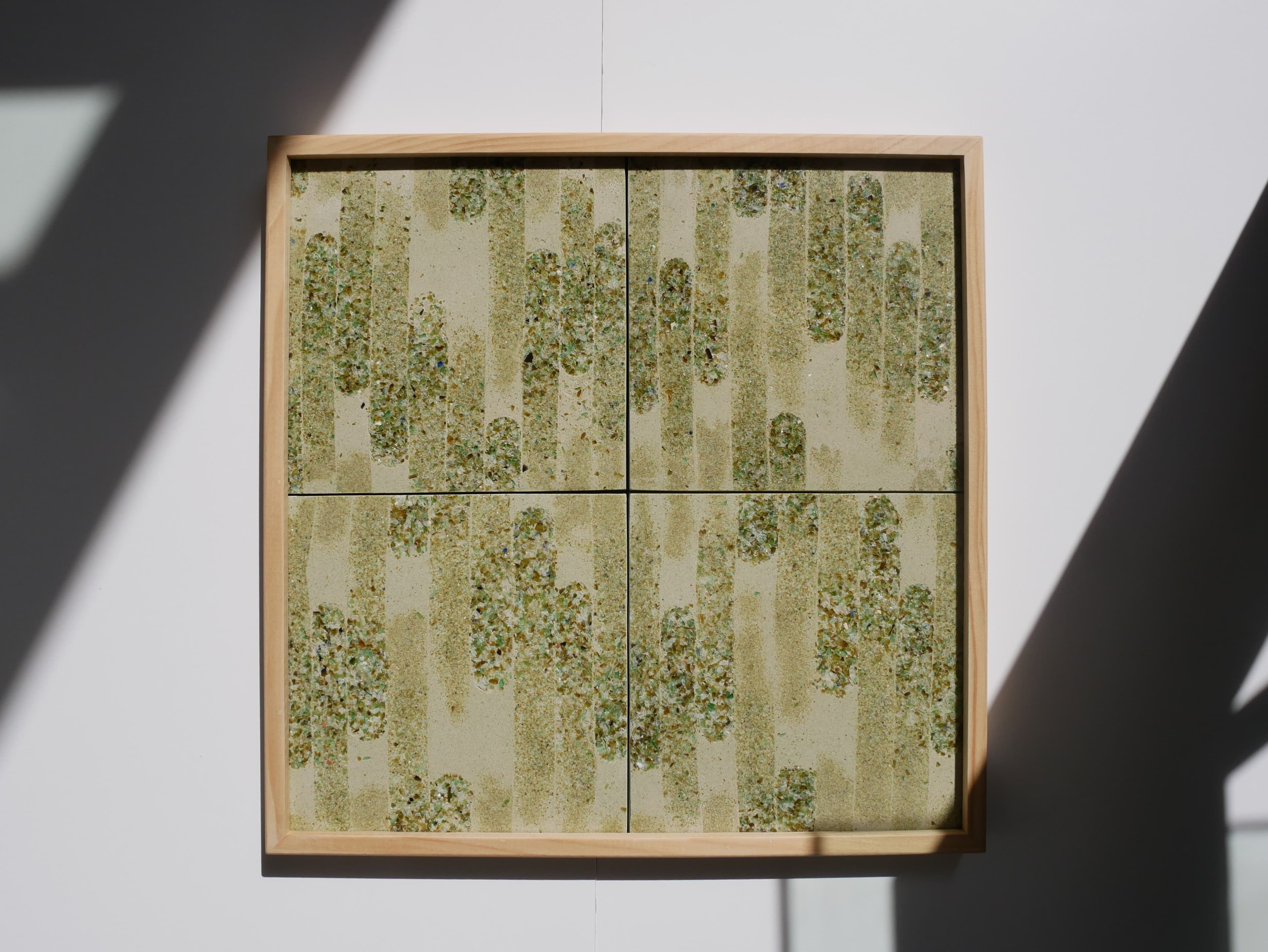1. How did you first encounter glass fines as a material, and what properties made them suitable for architectural and design applications?
Glass fines are a by-product of the recycling industry, the fine particles left behind during the mechanical sorting of glass. They’re typically labelled as non-recyclable, destined for landfill or used as filler in construction. I was initially struck by the sheer volume of glass collected but not reused, especially in urban waste streams. This led me to explore where that material ends up. That’s how I discovered glass fines.
What fascinated me was their latent potential. Once reconstituted and shaped through thermal treatment, glass fines become a glass-ceramic. They offer the hardness, surface finish, and resilience of glass, but without transparency. That lack of transparency, ironically, gave me aesthetic freedom. I could push the material toward something tactile, even earthy, while preserving its industrial legacy.

2. In your Terre de Verre process, you work with glass dust directly, without binders or resins. Can you specify how you control particle size and purity through sieving to achieve structural integrity?
The process begins with sieving, which is critical, not just for size separation but for purity control. Each grain size behaves differently during firing. Fine powders tend to fuse more readily but also trap more air, leading to bubbling. Coarser grains create structure but need tighter arrangement to ensure stability.
Beyond grain size, purity is key. Glass fines often contain organic residues, metals, ceramics, or even microplastics. My sieving process eliminates these contaminants. In many cases, I manually inspect and separate grains to ensure visual and structural consistency. I then arrange these grains, either randomly or in modular grid patterns, to create texture and rhythm, almost like geological strata.
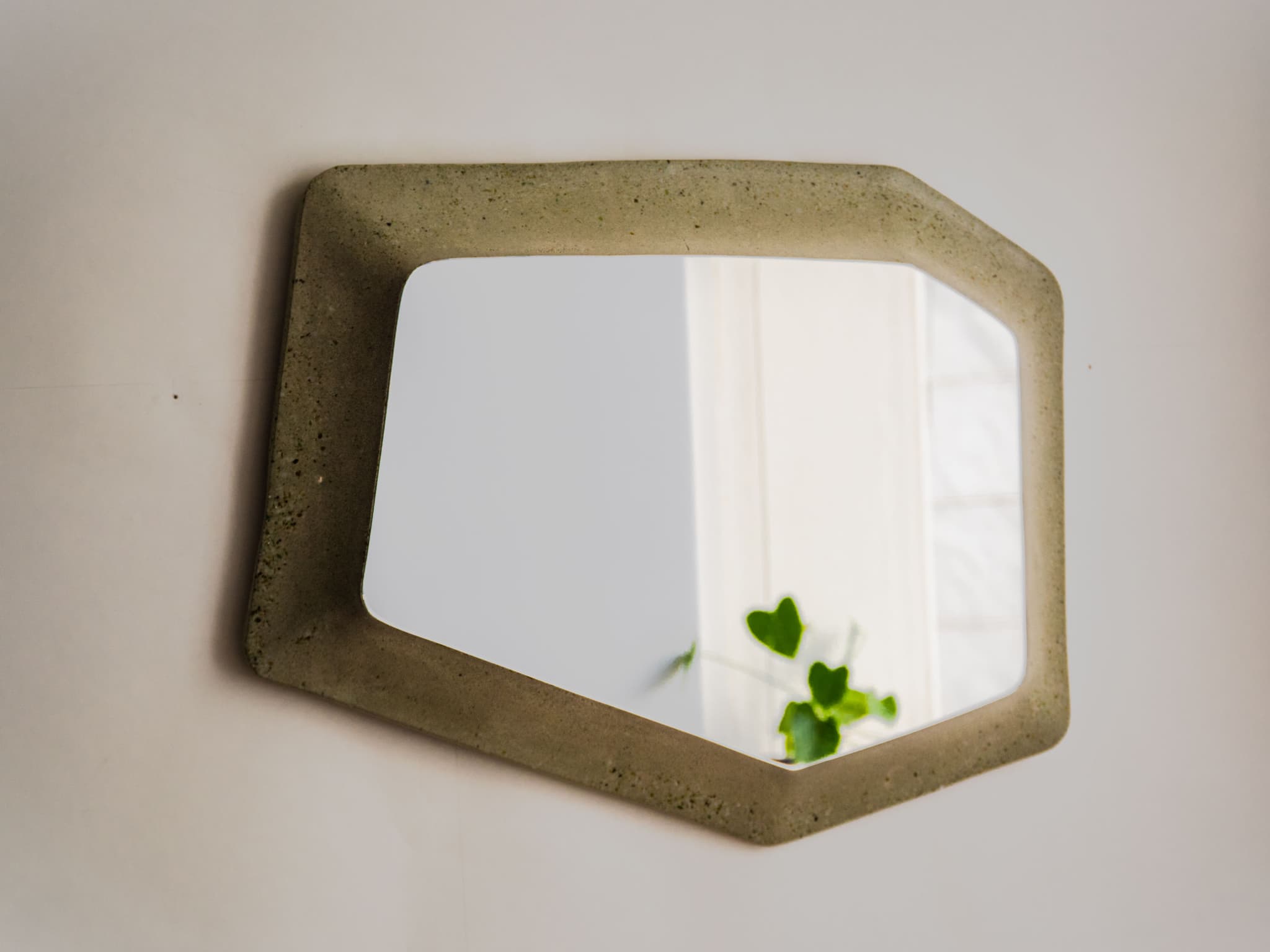
3. What drove your choice to fire at ~800 °C rather than standard glass recycling temperatures around 1200 °C, and how does this affect energy footprint and material performance?
This decision was both aesthetic and ecological. Firing at around 800 °C significantly reduces the carbon footprint of the process. It uses nearly 30–40% less energy than standard vitrification. But equally important was the material behavior at that temperature.
At 800 °C, the glass particles agglomerate without fully melting, which allows them to bond structurally while retaining a granular texture. This limits issues like warping or bubbling that occur when multiple types of glass, each with different thermal coefficients, are melted together. Instead of aiming for a pure, molten glass finish, I lean into a ceramic transformation, a middle ground between melting and fusing that maintains the material’s origin story.
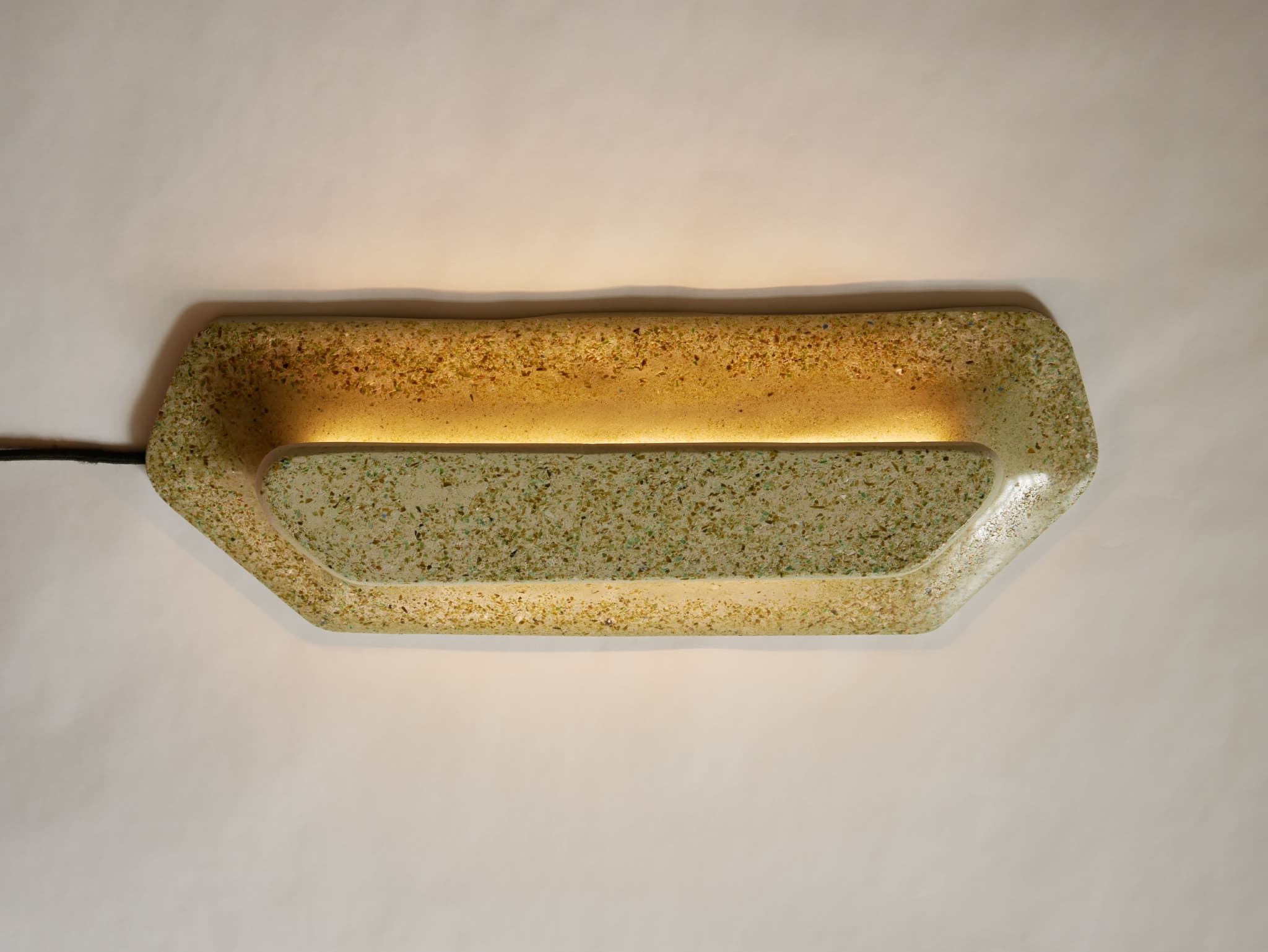
4. You mention using reusable moulds instead of plaster casts. Could you describe the design and fabrication process of those moulds and how they reduce process waste?
Conventional plaster moulds are single-use and generate enormous waste in studio and industrial contexts. I opted for refractory bricks, the same bricks used to line kilns. They’re thermally stable, durable, and machinable using CNC milling.
The design process begins with digital modeling, followed by subtractive CNC cutting to create the mould cavities. These bricks can be reused hundreds of times. Because they resist thermal shock, they allow me to fine-tune firing profiles without worrying about mould integrity. This switch from plaster to reusable infrastructure aligns with my core goal, to create circular processes not just in materials, but in the tools that shape them.
5. When designing diverse items, from architectural panels to light fixtures, how do you adapt glass‑ceramic techniques like glazing or fusing across scales and forms?
The base temperature curve remains consistent across object types, but I adapt holding times, ramp rates, and cooling phases depending on thickness and complexity. For small objects like tiles or light fixtures, shorter dwell times are enough to achieve surface cohesion. For larger architectural panels, I often extend the soak period to ensure full inter-grain bonding.
What’s exciting about this scalability is that it allows for a single material language across disciplines, from interior design to architecture. Whether it’s a luminaire or a cladding panel, each object carries the same mineral identity, just expressed through different rhythms of scale.
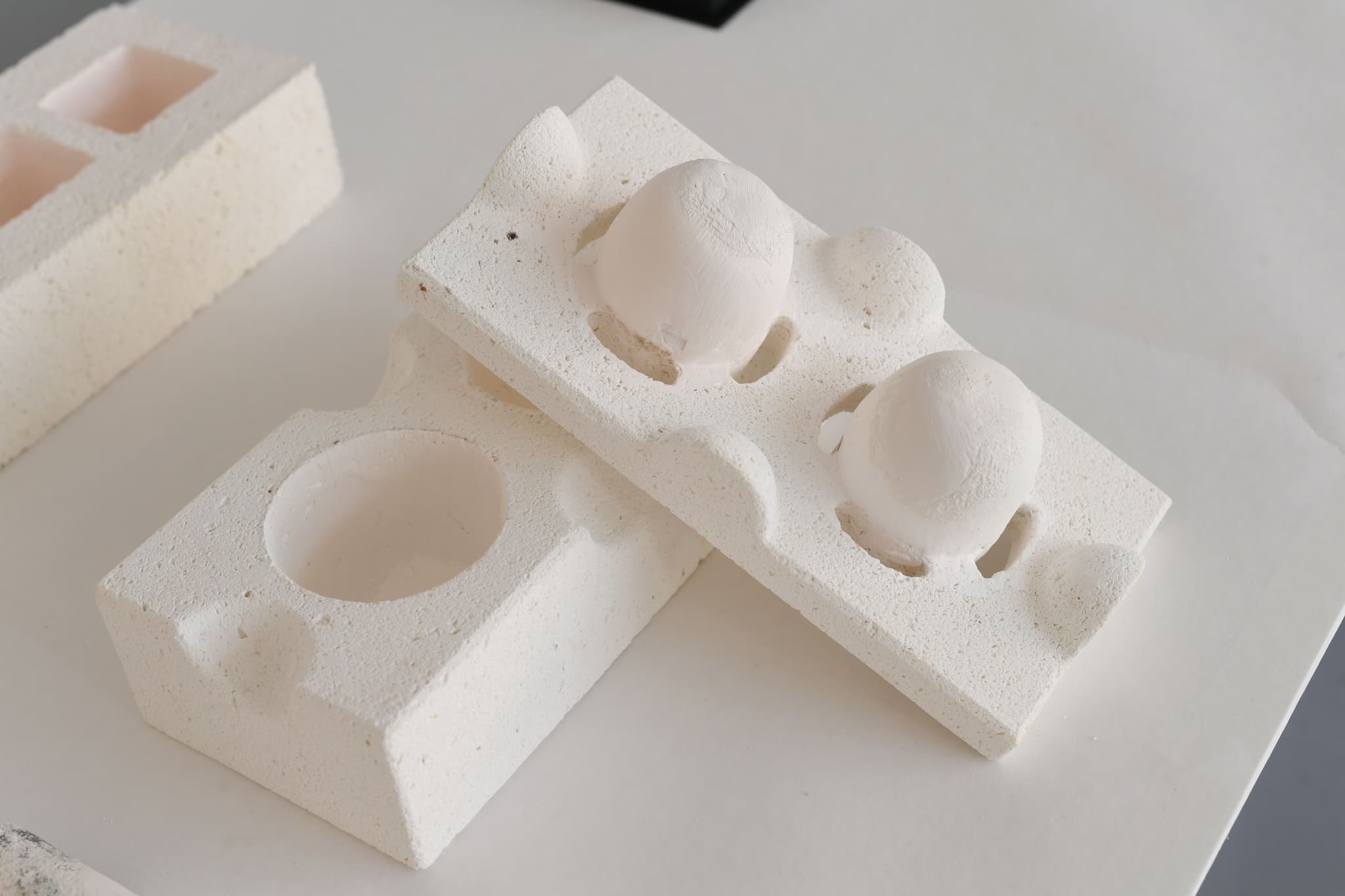
6. What were the main technical challenges you faced in fusing or vitrifying fine glass powder without added binders, and how did you solve them?
This process was entirely empirical. I had no academic or industrial roadmap. My biggest challenges were shrinkage during firing, bubbling caused by trapped air or residues, and warping due to uneven temperature distribution.
I solved these issues through an extended cycle of material testing. I adjusted particle size, firing profiles, mould compositions, and even kiln loading techniques. Eventually, I developed a set of firing curves that let the material "settle" before cohesion, reducing internal stresses and preserving flatness. It’s a form of material listening, letting the glass tell me what it needs to stabilize.
7. In your work, how do you balance the aesthetic (e.g. marble‑like translucence) with structural durability when working with 100% recycled material?
This balance is delicate. I want to elevate the material, to remove the stigma of “waste”, while still acknowledging its origin. I often aim for finishes that evoke stone or ceramic, not glass. Think: marble-like translucence, obsidian depth, lava-like flow.
But beauty alone is not enough. The pieces must be structurally sound, especially for architectural use. That’s why every design decision is filtered through the lens of material integrity. Will it warp? Will it hold weight? Is it weather-resistant? I’ve found that pushing the material aesthetically often reveals new structural capabilities. Form and function become co-dependent, not competing forces.
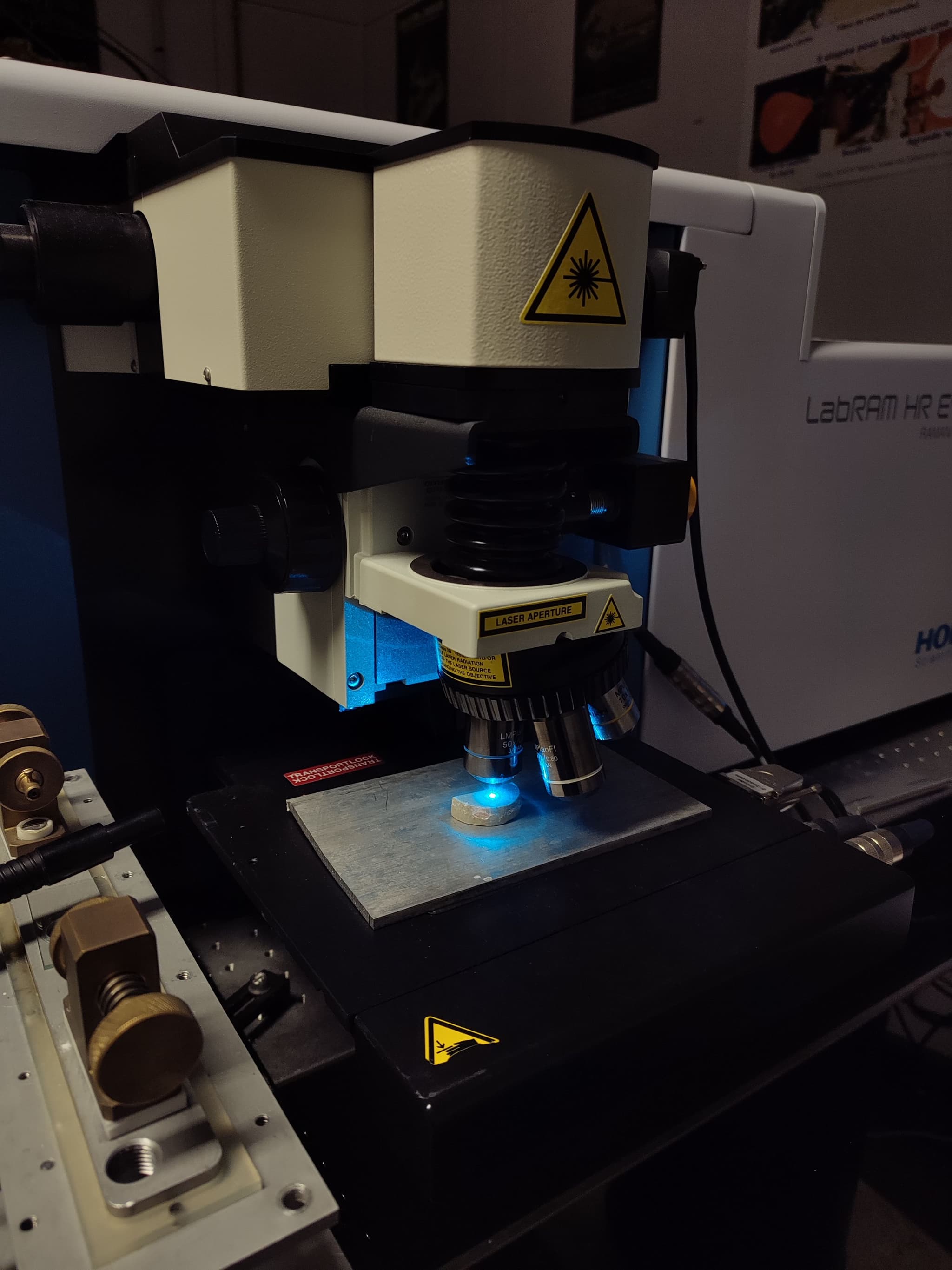
8. Could you evaluate the scalability of your process? How might the technique transition from small-series prototypes toward larger architectural or industrial production?
What’s encouraging is that the core steps, sieving, arranging, firing, scale elegantly. The same CNC machines used to cut small moulds can be programmed for larger modules. The kilns, of course, need to be up-sized. But their principles remain the same.
The real bottleneck is manual labor. Currently, I arrange each piece by hand or with modular grids. Scaling would require automated grain arrangement or robotic patterning. Still, the system is designed to be modular, panels, bricks, and tiles that can be mass-produced without compromising the material story.
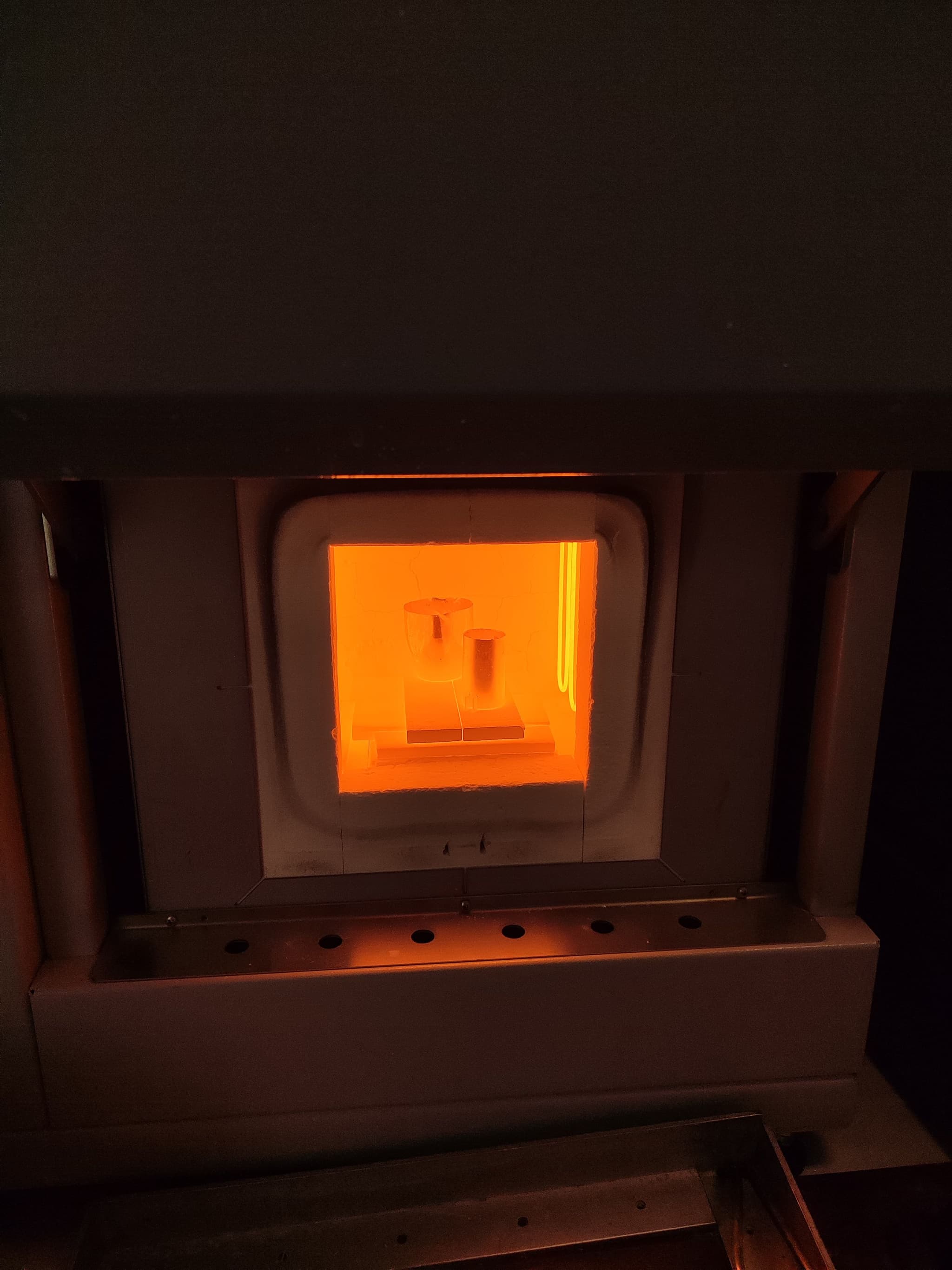
9. Since your practice bridges prototyping, craft, and industrial cultures, how has collaborating with glass or ceramics artisans influenced your approach to material innovation?
Working with master artisans brought depth to my understanding. They showed me what’s possible, and what’s fragile, in traditional techniques. Their hands have a kind of intuitive wisdom that no digital simulation can replicate.
These collaborations taught me that innovation doesn’t always mean novelty. Sometimes, it’s about reframing traditional methods through a contemporary lens. I’m not trying to replace the artisan. I’m extending their lineage into waste-based materials, into new contexts like AI-enabled circular design and regenerative architecture.
10. When exhibiting Earth of Glass at Saint‑Étienne Biennale 2025 or Milan Design Week, did the curatorial context affect how you configured material studies or selected applications?
Interestingly, no. The narrative arc remained the same, from dust to form. Saint-Étienne highlighted research and methodology. It was about process, failures, potentials. Milan, in contrast, focused on the finished artefacts, polished, contextualised within design culture.
But I didn’t change the core message. Whether the context is conceptual or commercial, I want to show the full potential of glass dust, not just as a material but as a design philosophy. That’s what Earth of Glass stands for, a commitment to re-seeing waste as a primary resource.

11. How do you envisage glass dust evolving beyond furniture and coverings? Could it play a role in circular construction systems or modular architecture?
Definitely. We’re already prototyping architectural claddings and decorative objects. But I see a clear trajectory toward semi-structural systems, bricks, panels, pavers made from glass dust.
The biggest hurdle is scaling beyond the artisan workshop. Developing standardised modules for the construction industry requires funding, certification, and partnerships with circular architecture studios. But the logic is already there. If we can turn glass waste into a durable, aesthetic, thermally stable surface, then the leap to structural components is not far.
